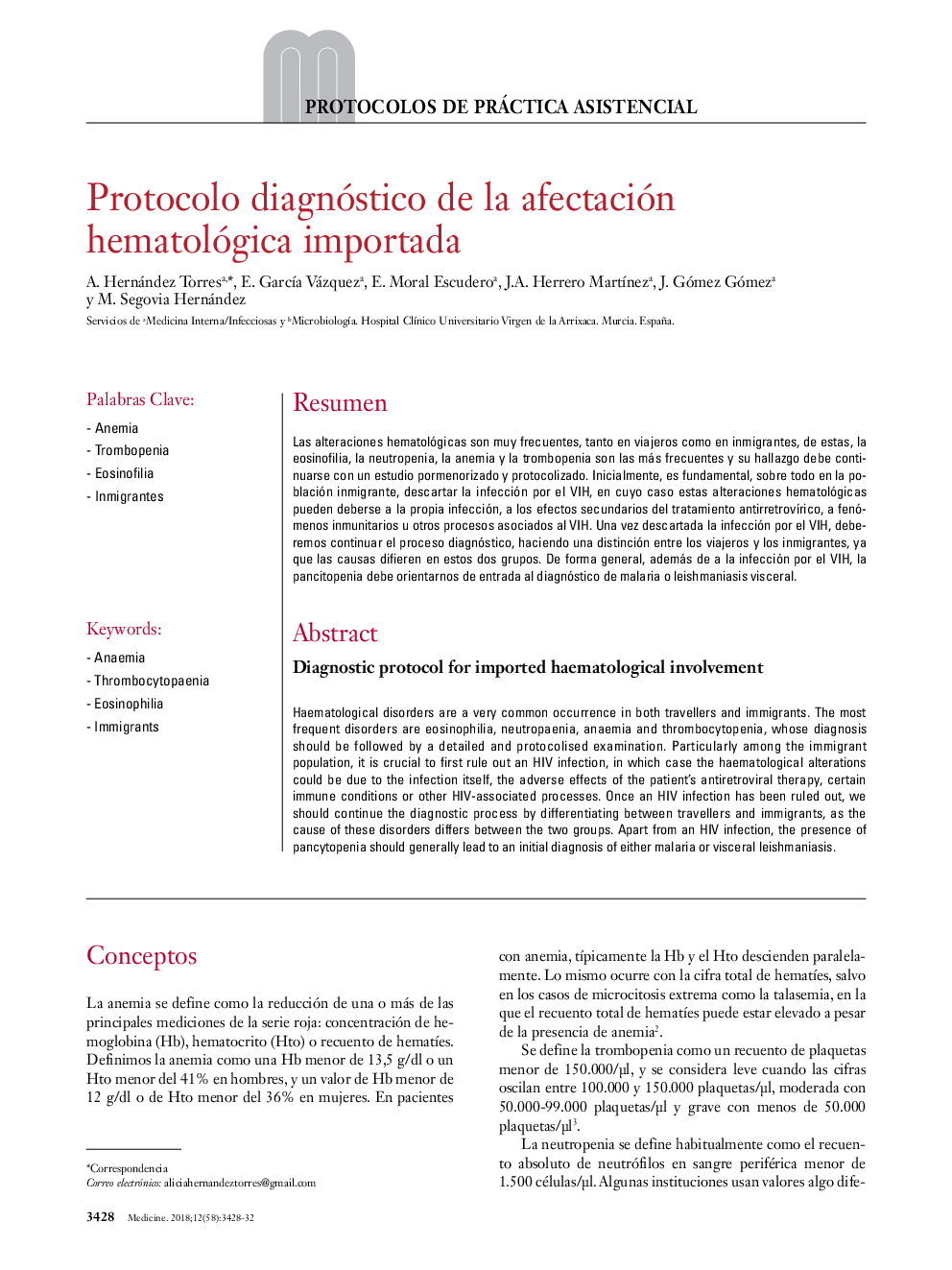| Article ID | Journal | Published Year | Pages | File Type |
|---|---|---|---|---|
| 8764214 | Medicine - Programa de Formación Médica Continuada Acreditado | 2018 | 5 Pages |
Abstract
Haematological disorders are a very common occurrence in both travellers and immigrants. The most frequent disorders are eosinophilia, neutropaenia, anaemia and thrombocytopenia, whose diagnosis should be followed by a detailed and protocolised examination. Particularly among the immigrant population, it is crucial to first rule out an HIV infection, in which case the haematological alterations could be due to the infection itself, the adverse effects of the patient's antiretroviral therapy, certain immune conditions or other HIV-associated processes. Once an HIV infection has been ruled out, we should continue the diagnostic process by differentiating between travellers and immigrants, as the cause of these disorders differs between the two groups. Apart from an HIV infection, the presence of pancytopenia should generally lead to an initial diagnosis of either malaria or visceral leishmaniasis.
Related Topics
Health Sciences
Medicine and Dentistry
Medicine and Dentistry (General)
Authors
A. Hernández Torres, E. GarcÃa Vázquez, E. Moral Escudero, J.A. Herrero MartÃnez, J. Gómez Gómez, M. Segovia Hernández,
